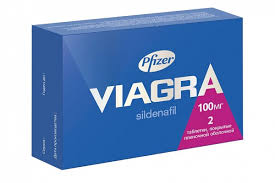
Understanding Rybelsus: Benefits, Use, and Considerations
Rybelsus is a novel medication that has garnered attention for its role in managing type 2 diabetes. With a unique formulation and mechanism of action, it represents a significant advancement in diabetes care. For those considering this treatment, it is essential to understand its benefits, how to use it properly, and what precautions to take. If you’re in Croatia, you might be interested in Rybelsus rybelsus tablete cijena u hrvatskoj for more information on pricing and availability.
What is Rybelsus?
Rybelsus (semaglutide) is an oral medication specifically designed for adults with type 2 diabetes. It is part of the glucagon-like peptide-1 (GLP-1) receptor agonist class of drugs. Unlike traditional injectables in the GLP-1 class, Rybelsus is taken as a pill, making it a more convenient option for many patients. The medication works by mimicking the effects of the GLP-1 hormone, which helps to lower blood sugar levels, enhance insulin secretion, and reduce appetite.
How Does Rybelsus Work?
The primary action of Rybelsus is its ability to stimulate insulin production in response to glucose. This helps to lower blood sugar levels after meals. Additionally, Rybelsus slows down gastric emptying, which can contribute to a feeling of fullness and help reduce overall food intake. This dual mechanism of action has made Rybelsus an effective choice for managing blood glucose levels in people with type 2 diabetes.
Indications for Use
Rybelsus is indicated for adults with type 2 diabetes to improve glycemic control. It can be used alone or in combination with other diabetes medications, including metformin, sulfonylureas, or insulin. It is particularly beneficial for individuals who prefer an oral medication over injections, as many patients find the idea of daily injections daunting.
Dosage and Administration
Rybelsus is typically prescribed as a starting dose of 3 mg once daily for 30 days; this is to allow the body to adjust to the medication. After 30 days, the dose may be increased to 7 mg daily, and if needed, it can be further increased to a maximum of 14 mg daily after at least another 30 days. It’s important to take Rybelsus on an empty stomach, at least 30 minutes before the first food, drink, or other medications for optimal absorption.
Benefits of Rybelsus

The benefits of Rybelsus extend beyond just lowering blood sugar levels. Some of the notable advantages include:
- Weight Loss: Many patients experience weight loss while on Rybelsus, which is a significant benefit for individuals with type 2 diabetes who may also struggle with obesity.
- Cardiovascular Benefits: Clinical studies have indicated that Rybelsus may have positive effects on cardiovascular health, reducing the risk of major adverse cardiovascular events.
- Convenience: As an oral medication, Rybelsus offers a more user-friendly approach for managing diabetes, particularly for those who are needle-averse.
Potential Side Effects
Like all medications, Rybelsus can cause side effects. The most common side effects reported include nausea, vomiting, diarrhea, constipation, and abdominal pain. These effects tend to be mild to moderate and usually diminish over time. However, some serious side effects are possible, including pancreatitis and kidney issues, so it’s essential to discuss any concerning symptoms with a healthcare provider.
Who Should Not Use Rybelsus?
Rybelsus is not suitable for everyone. People with a personal or family history of medullary thyroid carcinoma or multiple endocrine neoplasia syndrome type 2 should avoid this medication due to an increased risk of thyroid tumors. Additionally, those with severe gastrointestinal problems or diabetic ketoacidosis should consult their healthcare provider about alternative treatments.
Monitoring and Follow-Up
Regular monitoring of blood glucose levels is crucial while using Rybelsus. Patients should also schedule regular check-ups with their healthcare provider to assess overall diabetes management and evaluate any potential side effects from the medication. Adjustments to dosage or additional medications may be necessary based on individual responses and safety profiles.
Conclusion
Rybelsus represents a promising option for managing type 2 diabetes, especially for those who prefer an oral medication. Understanding its benefits, appropriate use, and potential side effects is vital for patients considering this treatment. As with any medication, it’s essential to work closely with a healthcare provider to ensure the best possible outcomes and to monitor for any adverse reactions. By incorporating Rybelsus into a comprehensive diabetes care plan, individuals can take significant steps toward achieving better glycemic control and overall health.